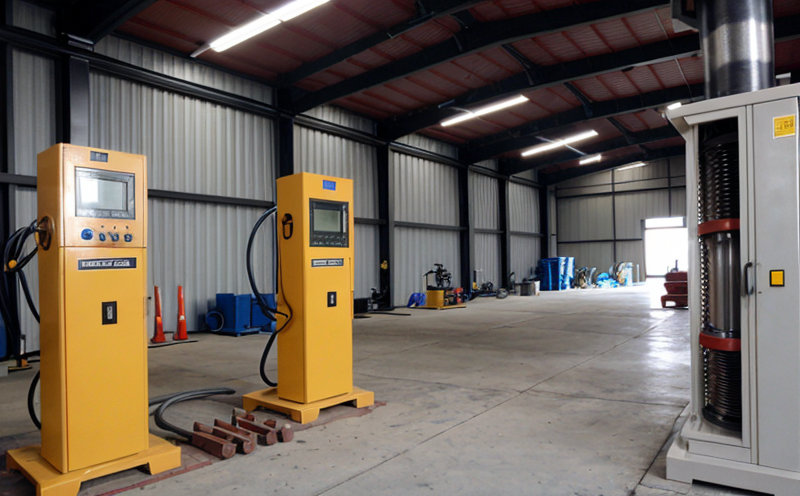ISO 13355-3 Transport Simulation for Package Strength
The ISO 13355 series of standards is designed to provide a framework for testing and assessing the transport simulation requirements of packages. These tests are critical in ensuring that products, especially those destined for international distribution or complex supply chains, can withstand the stresses they encounter during transit.
ISO 13355-3 specifically addresses the mechanical strength and compression testing of packaging units under simulated transportation conditions. This service is essential for quality managers, compliance officers, R&D engineers, and procurement teams who need to ensure that their packages meet international standards and can perform reliably in real-world environments.
The process involves subjecting a package to various transport simulation tests designed to mimic the actual journey it will take from manufacturer to consumer. These simulations include shock, vibration, drop, and compression testing which are all aimed at evaluating how well the packaging can handle the rigors of transportation without compromising product integrity or safety.
The methodology prescribed in ISO 13355-3 provides a standardized approach that ensures consistency across different laboratories and regions. This standardization is vital for ensuring that packages meet regulatory requirements, enhance consumer confidence, and reduce the risk of damage during transit.
Testing under these conditions helps manufacturers identify potential weaknesses in their packaging design and make necessary adjustments to improve resilience. It also allows suppliers to demonstrate compliance with international standards, which can be crucial for securing contracts or navigating global markets.
The tests conducted according to ISO 13355-3 are designed to replicate the most common transport scenarios faced by products during shipment. This includes but is not limited to road, rail, air, and sea transport conditions. By simulating these environments, we can accurately assess how well a package will perform under real-world stressors.
The process typically involves preparing the packaging unit according to specified guidelines in ISO 13355-3. This preparation ensures that any identified weaknesses or strengths are attributed correctly to the design and not influenced by improper handling during testing.
Once prepared, the package is subjected to various types of transport stress tests. These can include drop tests where packages are dropped from a specified height onto a defined surface, vibration tests where the package is exposed to controlled levels of mechanical vibration, and compression tests which apply pressure to simulate the weight and stacking effects during transit.
After each test, detailed observations are made regarding any deformations or failures in the packaging. These observations form the basis for determining compliance with ISO 13355-3 standards. The results provide valuable insights into areas that may require improvement, helping to enhance product safety and reliability throughout the supply chain.
Compliance with these international standards is not just about meeting legal requirements; it’s also about building trust and ensuring customer satisfaction. By adhering to ISO 13355-3 guidelines, companies can demonstrate their commitment to quality and integrity, which can be a significant advantage in today's competitive global market.
In conclusion, the ISO 13355-3 transport simulation for package strength test is more than just a compliance check; it’s an essential tool for improving product safety and reliability. It plays a crucial role in ensuring that packaged goods reach their destination intact, thereby enhancing customer satisfaction and reducing costs associated with damaged or lost shipments.
Applied Standards
| Standard | Description |
|---|---|
| ISO 13355-3 | This standard provides a framework for testing and assessing the transport simulation requirements of packages. It specifies methods for determining the mechanical strength and compression resistance of packaging units under simulated transportation conditions. |
Customer Impact and Satisfaction
- Reduces the risk of product damage during transit, enhancing customer satisfaction.
- Improves product integrity by identifying potential weaknesses in packaging design early on.
- Ensures compliance with international standards, facilitating easier access to global markets.
- Aids in meeting regulatory requirements, thereby reducing legal risks and potential penalties.
- Increases trust and confidence among stakeholders, including suppliers, distributors, and customers.
Use Cases and Application Examples
The ISO 13355-3 transport simulation for package strength test is widely used in industries such as pharmaceuticals, electronics, consumer goods, and food & beverage. It is particularly important for companies dealing with products that are sensitive to physical stress or require high levels of protection during transportation.
For example, a pharmaceutical company might use this service to ensure that its medication packaging can withstand the rigors of air travel while maintaining the integrity of the product inside. Similarly, an electronics manufacturer could employ these tests to verify that their device packaging is robust enough to handle rough handling and stacking in warehouses or on shipping docks.
In addition to protecting products from physical damage, this service also plays a vital role in ensuring compliance with international regulations related to package integrity and safety. This can be particularly beneficial for companies operating across multiple countries or regions where different standards may apply.
Another application is in the context of product launches or expansions into new markets. By using ISO 13355-3, a company can demonstrate its commitment to quality and reliability, which can help build trust with potential customers in these new markets.
The results from these tests are also valuable for ongoing improvements in packaging design. Manufacturers can use the insights gained from these simulations to refine their designs continuously, ensuring that they meet both current standards and future expectations of durability and safety.





